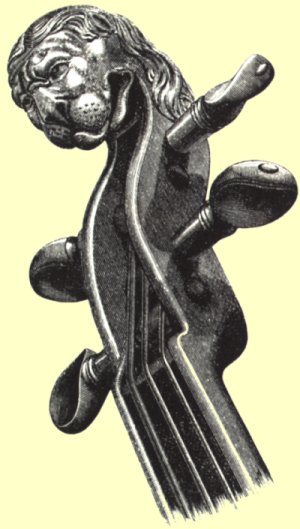Williamsburg Music
Today, we make themachines that make our music. The University of Houston's College of Engineering presents this series about the machines that make our civilization run, and the people whose ingenuity created them.
I've often said that music-making find its seat right up there at the pinnacle of high-technology in any age. That came home to me with special force the day my wife brought home a documentary video about the restored music-instrument shop in Colonial Williamsburg. I hadn't meant to watch it with her, but after she turned it on, I couldn't leave it. The video showed each step in the construction of a violin, and of a small harpsichord.
The labor itself was ever so slow, focused, and methodical; but I was riveted by what unfolded before me. These artisans were making absolutely no concessions to modern convenience. They did every step with period apparatus. You can't appreciate what that means without having seen it through from start to finish.
The workers used no power tools -- not for their jig saws, drills or lathes. They did nothing to violate the spirit of seventeenth- and eighteenth-century craftsmanship. At one point, a small hole -- about 1/32 of an inch -- had to be drilled in a harpsichord jack. The man nipped the head off a straight pin. Then he rolled the pin over a coarse file. That process imprinted tiny grooves that turned the pin into a primitive drill bit. Finally he mounted it in a small chuck driven manually by a bow-string.
They formed the violin scroll, and the dove-tail joints in the harpsichord case, with the virtuoso use of hand chisels. They used a hundred tricks to align wood grains -- to stain, glue, and polish wood. The few nails they used were hand-forged. Making a screw was too labor-intensive, so they used no screws.
Before our eyes, they shaped plectra for sounding the iron and brass strings in the harpsichord, from goose quills. They fashioned tiny springs from pig bristles, and so on and on.
Finally, as we listened to a Baroque sonata on the finished instruments, I reflected in astonishment on what I'd seen. Here was absolute intimacy with process. At each step those artisans knew how their physical world worked and how to deal with it.
Today we wonder what became of the age that gave us Newton in England and ultimately Jefferson in Virginia. Those people lived in a world where, for the first time in human history, science and technology were converging. It was a world where every educated person was a generalist, education touched the full range of knowledge, and manual skill was a common denominator for everyone.
Today we partition and specialize our lives. We allow the people who think about Tudor history, business software, and automobile repair to live in separate worlds. Our eighteenth-century forbears could build a violin from scratch, read Greek and Hebrew, and ultimately form a new government of and by themselves. They were a people whose freedom welled up from minds that still struggled to see the world whole.
I'm John Lienhard, at the University of Houston, where we're interested in the way inventive minds work.
For more on The Musical Instrument Maker of Williamsburg, see the following Williamsburg web site.
 This is a greatly revised version of Episode 286.
This is a greatly revised version of Episode 286.
The additional music in the audio version is Handel's Sonata in G minor, HWV364a played by Hiro Kurosaki (baroque violin) and William Christie (harpsichord). Violin Sonatas, Veritas 5455542.